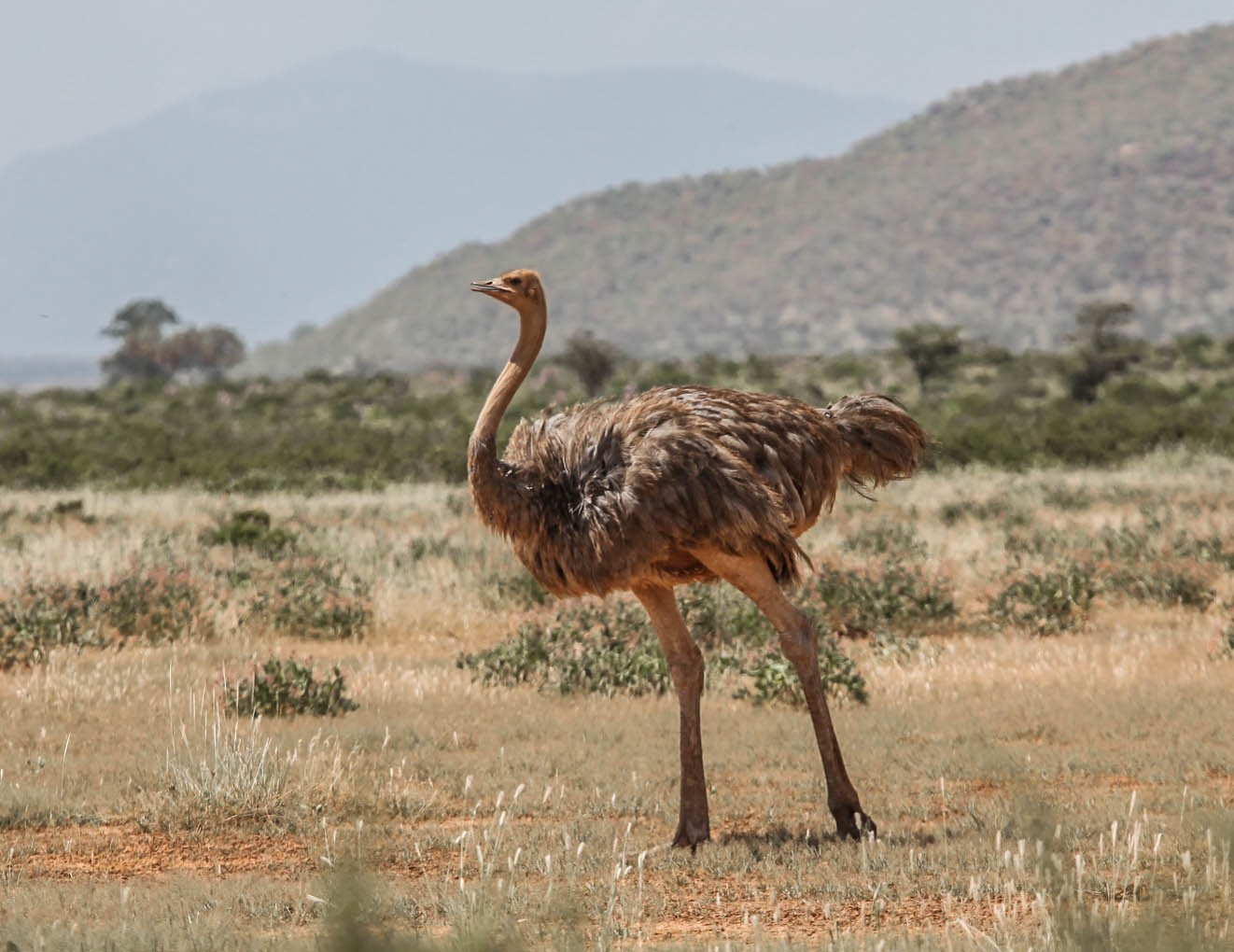Somali Ostrich
A species of Ostriches Scientific name : Struthio molybdophanes Genus : Ostriches
Somali Ostrich, A species of Ostriches
Botanical name: Struthio molybdophanes
Genus: Ostriches
Content
Description General Info
Description
Though generally similar to other ostriches, the skin of the neck and thighs of the Somali ostrich is blue (rather than pinkish), becoming bright blue on the male during the mating season. The neck lacks a typical broad white ring, and the tail feathers are white. The females are slightly larger than the males and browner in plumage than other female ostriches. The Somali ostrich is similar in size to other ostriches so far as is known, perhaps averaging marginally smaller in body mass than some subspecies of common ostrich (at least the nominate race, S. c. camelus). Reportedly Somali ostriches in captivity weigh about 105 kg (231 lb) but this may not be an accurate weight for wild birds as captive animals have feeding accesses not available to wild ostriches. It is thus one of the two largest extant bird species. 
Nest Placement
Ground
Feeding Habits
Somali Ostrich primarily consumes grasses, seeds, leaves, and succulents, particularly in arid regions. Occasionally, somali Ostrich will also eat insects and small vertebrates. Adapted to bushy habitats in the Horn of Africa, somali Ostrich exhibits browsing behavior rather than just grazing.
Habitat
Somali Ostrich thrives in the arid and semi-arid regions of the Horn of Africa and is well adapted to hot, dry environments. Their preferred habitats include vast grasslands, open woodlands, and areas dotted with thornbush, which provide shade and protection. While somali Ostrich does not require standing water, their resilience allows them to survive in these harsh, water-scarce landscapes.
Dite type
Omnivorous
General Info
Feeding Habits
Bird food type
Behavior
The Somali ostrich is differentiated ecologically from the common ostrich, with which there is some range overlap, by preferring bushier, more thickly vegetated areas, where it feeds largely by browsing, whereas the latter is mainly a grazer on open savanna. There are also reports of interbreeding difficulties between the two taxa. 
Distribution Area
The Somali ostrich is mostly found in Horn of Africa, especially in north-eastern Ethiopia and across all of Somalia. 
Species Status
A report to the IUCN in 2006 suggests that the Somali ostrich was common in the central and southern regions of Somalia in the 1970s and 1980s. However, following the political disintegration of that country and the lack of any effective wildlife conservation, its range and numbers there have since been shrinking as a result of uncontrolled hunting for meat, medicinal products and eggs, with the bird facing eradication in the Horn of Africa. In Kenya it is farmed for meat, feathers and eggs. 
